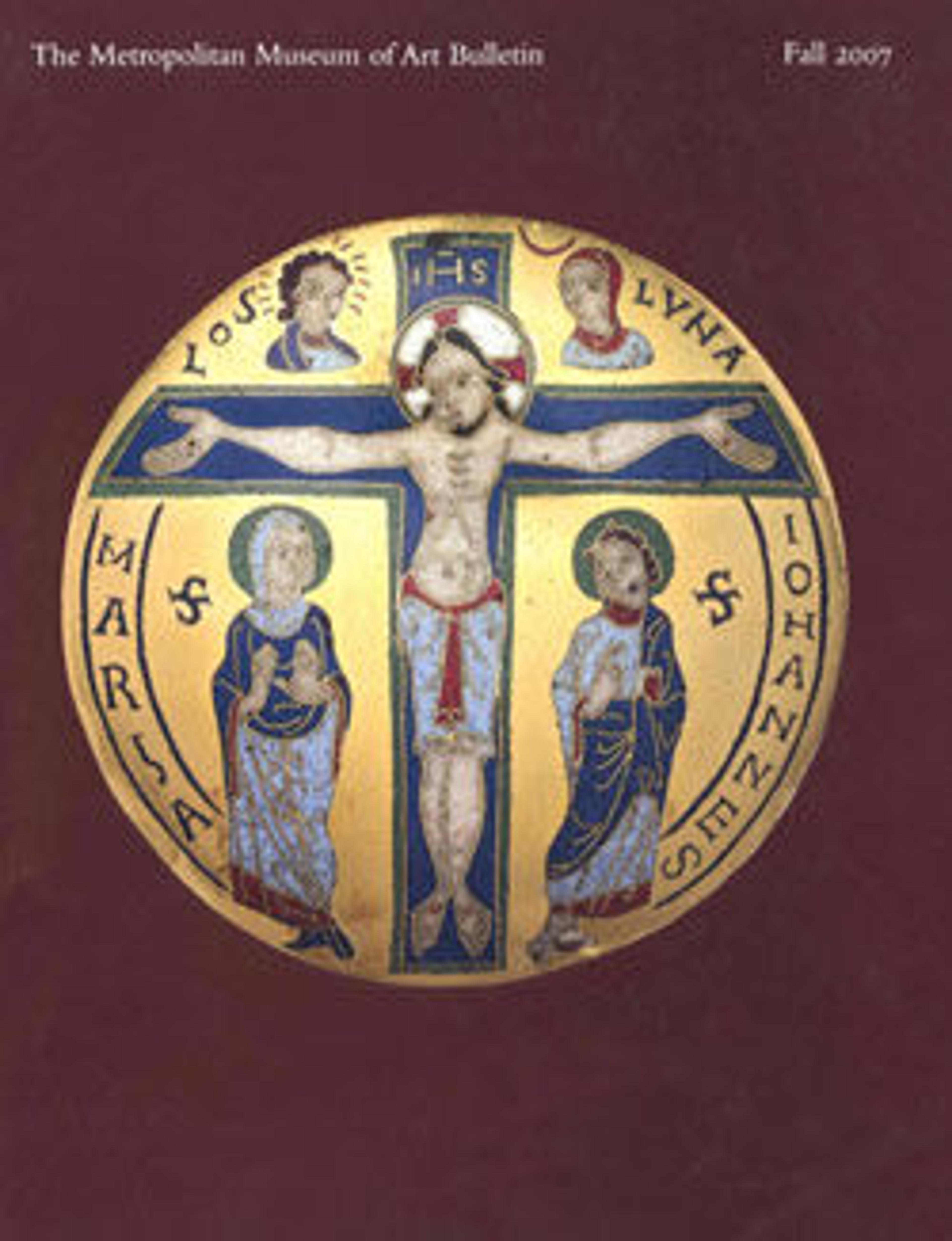Carpet
Flatwoven floor coverings representing a vibrant village and nomadic tradition were produced in a wide swathe of the Islamic world from Iran, the Caucasus, and Anatolia to Central Asia. This striking kilim reflects the continuation of a mythological and symbolic decorative repertoire that has long associations with Central Anatolia, here creatively reinterpreted in an early nineteenth-century tribal sensibility.
The kilim is woven in a palette of indigo blue and red with accents of brown, green, mauve, and white. The ends are finished with a series of horizontal bands, two of which consist of the "hook," or ҫengal, pattern. A wide border of hexagonal rosettes in green, brown, and mauve, each enclosing a gul, or abstract flower, frames the central field, a compartmentalized vertical composition incorporating a birth goddess motif that has survived in this region from the Neolithic period (2500 B.C.). Like many of the abstract motifs found on Anatolian kilims, this one is believed to have protective properties.
The kilim is woven in a palette of indigo blue and red with accents of brown, green, mauve, and white. The ends are finished with a series of horizontal bands, two of which consist of the "hook," or ҫengal, pattern. A wide border of hexagonal rosettes in green, brown, and mauve, each enclosing a gul, or abstract flower, frames the central field, a compartmentalized vertical composition incorporating a birth goddess motif that has survived in this region from the Neolithic period (2500 B.C.). Like many of the abstract motifs found on Anatolian kilims, this one is believed to have protective properties.
Artwork Details
- Title: Carpet
- Date: ca. 1800
- Geography: Attributed to Turkey
- Medium: Wool, cotton, and silver mtal wrapped thread
- Dimensions: H. 64 3/16 in. (163 cm)
W. 163 3/8 in. (415 cm) - Classification: Textiles-Woven
- Credit Line: Purchase, Rebecca and Richard Lindsey Gift, 2006
- Object Number: 2006.190
- Curatorial Department: Islamic Art
More Artwork
Research Resources
The Met provides unparalleled resources for research and welcomes an international community of students and scholars. The Met's Open Access API is where creators and researchers can connect to the The Met collection. Open Access data and public domain images are available for unrestricted commercial and noncommercial use without permission or fee.
To request images under copyright and other restrictions, please use this Image Request form.
Feedback
We continue to research and examine historical and cultural context for objects in The Met collection. If you have comments or questions about this object record, please contact us using the form below. The Museum looks forward to receiving your comments.
